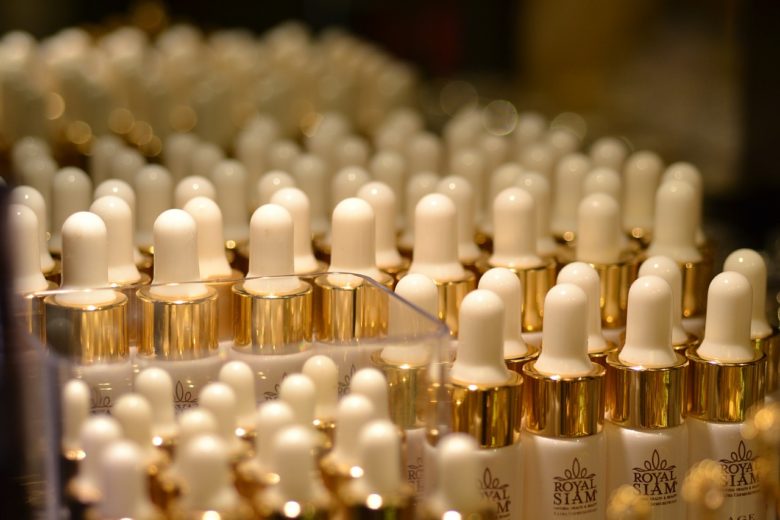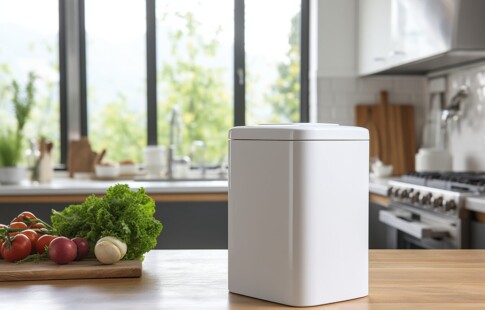
Sustainable Cosmetic Packaging Revolutionizing the Beauty Industry
We are reader-supported. When you buy through links on our site, we may earn affiliate commission.
This is the fourth of a five-post series looking into environmental issues with the beauty industry, areas it’s excelling in sustainability and where we can expect to see sustainability efforts improve in the future. You can find the previous post here.
While environmentally friendly personal care companies originally marketed primarily to those with a hippie or new age mindset, today, beauty product manufacturers who ignore trends toward sustainability risk becoming obsolete. Conscientious consumers, especially millennials and Gen Zers increasingly demand products that treat the planet kindly. As science develops ever more eco-friendly packaging materials, cosmetic manufacturers benefit both the Earth and their bottom line by utilizing these innovations to decrease their carbon footprint.
As consumers, we want to spend money wisely, and seeking products packaged in environmentally sound ways gives us a good place to start. Selecting toiletries packaged in recyclable materials completes the sustainable cosmetic packaging puzzle.
Ocean Plastic and Bioplastics
A stroll down the personal care aisle leaves you awash in a sea of plastic. Indeed, plastic continues to make up the majority of packaging for several reasons: They prevent product contamination and cost relatively little to produce. Sadly, the majority of single-use plastics do not get recycled. Therefore, manufacturers are ringing in change from the top.
One innovation involves the use of bioplastics. Instead of stemming from petroleum, bioplastics are made from vegetable sources such as sugar cane. The natural-base material makes these plastics biodegradable. Unlike petroleum-based plastics which take hundreds of years to decompose, these biodegradable plastics dissolve in just three to six months.
Ocean plastics offer an unconventional but ecological packaging material. Plastic waste in oceans gathers and created huge patches of floating trash hazardous to marine life. By scraping these patches of recyclable plastic, manufacturers enjoy an economical and green source of plastic for packing their wares for sale.
Greater Glass Transparency
While you can recycle 100 percent glass multiple times without any reduction in quality, previously, many manufacturers incorporated plastic into the glass to prevent breakage. This resulted in nonrecyclable pseudo-glass.
Fortunately, many companies now have returned to good old glass to create packaging that can see more than one use. As an added bonus, glass comes from common materials such as sand and limestone, so using glass saves money as well as the planet.
Toward a Sustainable Squeeze
Think about the last time you brushed your teeth. Chances are, you squeezed the gel out of a tube. Tubes make up a large part of cosmetic packaging but weren’t always recyclable or sustainable.
Thankfully, change has come from companies such as Adelphi, which manufactures not only recyclable cosmetic tubes, but also recyclable implements used during the manufacturing process such as tube fillers. As more companies switch to reusable tubes, polishing your pearly whites will no longer mean creating landfill fodder.
Bio-Friendly Papers and Boxes
Just about anything shippable comes in a box, but this practice results in the chopping down of numerous trees. Luckily, Mother Nature provides an alternative to paper products generated from wood pulp: hemp paper and cardboard.
Anyone who has ever stood downwind of a paper mill knows the noxious odor of chemicals could easily gag a maggot. That’s because various toxic chemicals, such as bleach, go into the manufacturing of traditional paper products. Hemp paper helps the environment by requiring no harsh chemicals to break down into usable pulp.
That’s far from the only ecological benefit of switching to hemp. While trees take years, even decades, to reach full growth, hemp grows quickly and can be harvested as soon as four weeks after planting. In addition, the same acre planted with hemp instead of trees produces four times as much paper.
With innovations in industrial hemp technology, switching to hemp paper saves money as well. That benefits any business’s bottom line, including manufacturers of personal care products.
Search for the Recycling Seal
By far the easiest way to make beauty products more sustainable involves utilizing recyclable materials — and recycling starts at home. Instead of ditching your half-empty cosmetic containers, wash them out and repurpose them.
Old mascara wands, for example, make fine brushes for scrubbing shower grout and eliminating those yucky brown stains that build up around faucets. Keeping an old compact in your car’s center console gives you a handy mirror for making quick lipstick touch-ups. Speaking of lipstick, if you’re truly ambitious, use old tubes to hold homemade lip balm created with beeswax and your favorite essential oils.
Many manufacturers have incorporated cosmetic container recycling programs so you can return used cosmetics for recycling. Burt’s Bees, for example, provides customers with a prepaid label to return empty tubes and vials. Other companies offer customers a substantial discount when they bring back bottles to refill versus buying new.
Think Big
One simple way beauty manufacturers and consumers alike can become more eco-friendly is by producing bigger packaging sizes and buying in bulk. Who doesn’t love another excuse to make a Costco run?
Large containers cost less to produce than numerous smaller containers, and they utilize fewer raw materials. In addition, on the consumer end, buying in bulk results in fewer trips to the store and fewer carbon emissions from car exhaust.
Even some hotel chains are jumping on the bulk bandwagon. Hotel giant Marriot recently announced a switch from small sample-size shampoos, conditioners and body washes in lieu of larger, in-shower containers. While this may mean taking home one less souvenir the next time you travel, the benefits to the planet make ditching the sample sizes worth it.
Moving Forward With Sustainable Cosmetic Packaging
Where demand exists, supply will follow — and consumers have made it clear that environmental sustainability drives their purchasing decisions. With further innovations in technology, a world where beauty and personal care products become 100 percent sustainable may soon become a gorgeous new reality.
Share on
Like what you read? Join other Environment.co readers!
Get the latest updates on our planet by subscribing to the Environment.co newsletter!
About the author
Jane Marsh
Starting from an early age, Jane Marsh loved all animals and became a budding environmentalist. Now, Jane works as the Editor-in-Chief of Environment.co where she covers topics related to climate policy, renewable energy, the food industry, and more.





